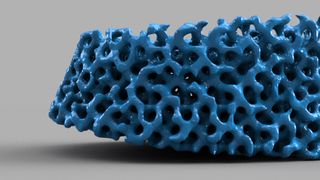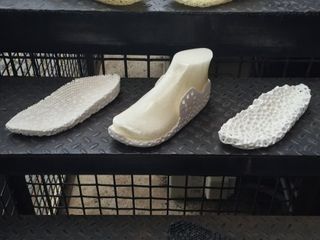How 3D printing to order is changing manufacturing
One is all you need

The 3D revolution has been in full swing for a while now, but to date a lot of the focus has been onthose little 3D printed desk toys and 3D printed body parts.
But another trend that's only now taking off is the industry of one-off custom products tailor made for your specific needs.
So far most of the talk has been about products the economics of mass production and warehousing don't suit – out-of-circulation spare parts for your ancient kitchen blender, for example.
That's what two guys graduating from Philadelphia University thought when one of them had problems finding shoes that fit. Why not 3D print shoes, made to measure for individual feet?
A new Footprint
Footprint's founders Matthew Flail and Tim Ganter knew they were onto something when professors at their school offered to invest. The major shoe brands have all investigated similar territory over the last year and Flail recalls being told that if they didn't do it, someone else would.
So far the company has been busy working out 3D printed structures that both work and look good, but Flail says the ultimate aim is to streamline every aspect of shoe production, reduce the amount of steps and parts and be a direct-to-consumer provider. "It's the new industry of small providers who hope to cut out the middle man," he says.
Even though Footprint has had what Flail calls 'some successes and a lot of failures' in testing, it's far easier to absorb the risk working with one-off, inexpensive prototypes than mass manufacturing and distribution pipelines.
Are you a pro? Subscribe to our newsletter
Sign up to the TechRadar Pro newsletter to get all the top news, opinion, features and guidance your business needs to succeed!
One print, multiple industries
Duann Scott, a business development manager at software vendor Autodesk, works with 3D printing partners, and he's seeing the technology gradually transform more than one industry as design and printing complexity becomes easier.
He says the process of reducing materials or increasing performance suits more complex products like dental implants or hearing aids, but as such complexity becomes easier, we'll see 3D printing enter more traditional products.
But he's quick to add that 3D printing won't sweep traditional manufacturing, warehousing and shipping aside overnight. "If we compare [3D printed specialty items with mass market products], it doesn't work. If you can mass produce a spoon out of metal stamping, 3D printing isn't going to compete with that for a number of years."
But when we get there, might there come a time when we simply won't go to shops to buy shoes or other consumer goods, making them to order for our body or requirements as individuals?
A lot of products might already be at that stage without us realising. 3D printing has become so advanced, experts are talking about it producing organs made from our own DNA so our body doesn't reject them.
Overcoming barriers
The barrier to a widespread 'on demand' 3D printed economy might simply be because the infrastructure surrounding the manufacture and distribution of mass-market goods is simply too big to change quickly.
"Injection moulding [a common manufacturing process] is relatively new in the scheme of human history," Scott says. "Possibilities are getting broader in part because of patents expiring on machines and materials. As that happens it'll help the industry become cheaper faster because there are more options."
So if entrenched, big-company barriers melt away by a process of economic evolution, what's the endgame? With 3D printing getting cheaper and easier all the time, how long before even this brief window closes on a business like Footprint and people are measuring up and producing their own custom shoes right on their desktops?
"It's not as easy as it seems," Flail says. "The technology for personal or home use is wonderful but printing complex structures that give us proper cushioning like in our footwear is virtually impossible to do on these printers. The costs of more accurate machines will be prohibitive to entry into the consumer market for the foreseeable future."

Of course, in many ways only one thing will drive change, and that's the price of goods. At the moment Footprint products are a premium item costing much more than traditional factory-produced shoes, but how will the spread of the practice and equipment help bring prices more in line with traditional mass-market goods?
"The price of bespoke products can come down, things which need complexity and customisation but without artisanal craftsmanship," Scott says. "All it needs is software to do it. Take a dentist who doesn't know how to 3D model anything but knows how to change a few parameters to make the object he needs for a patient. [S/he] can see how, with the price of the machine going down and the more mature options, they'll find it easier to approach the market."
Along with such ease of use, low financial and technological barriers to entry are giving small 3D printing operators a whole new world to discover. How long before you yourself are one of them?
